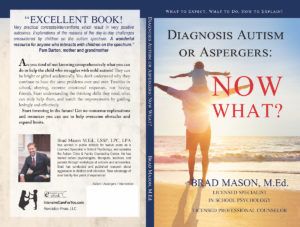Autism, Engineers: Thinking in Pictures or Words?
Coronavirus Kid Care Kit detailing how to reassure kids in crisis by age group, structuring their day, menu of offline at-home activities, and managing technology use. Children with special needs and behavior problems stuck at home without structure can push their parents to the edge. Send them this free resource.
Thinking in pictures vs. thinking in words; what is the difference? How would this impact communication and self-regulation skills? I find that many people with autism, engineers, and people with ADHD report that they think in pictures. Teachers mostly say they think in words.
When I’m doing a live workshop I like to ask people “What are your thoughts?” Then I get more specific- “I mean, are your thoughts pictures or words, when you think, is it like a movie in your mind, or more like just feeling, or is it talking in your head, and if it’s talking, whose voice is it? Do you have conversations with other people in your head when you think, do you combine this with feelings and images?”
So if you are thinking in pictures or a video stream, how do you step outside your video to make another video to analyze the first video- in other words, how do you think about what you are thinking about to analyze how reasonable your thoughts are and if your thinking about what you intend to think about or are supposed to think about?
(This passage is an excerpt from the book Diagnosis Autism or Aspergers: Now What?)
If you are thinking in words, you can do this, you can think to yourself, “That makes me mad, I’d like to kick her- whoops, no, I better not, that would be mean, and I could get in trouble.” See, wala! We have self-monitor and inhibition skills! Language in the form of words make this possible, words are a shortcut. If I am thinking in words, it’s easy for me to say those words to someone else and they will probably understand what I am trying to represent with the words. But I can’t upload a video from my head to yours.
Remember those primitive TRS80 computers that came out in the early 80’s? The first games, like Gilgamesh’s Tavern, they were script, or words running down the screen. Then we started using games with more graphics, and we needed a LOT more processing power and memory. It may be like this for our brains, too, thinking in words only uses a little capacity, pictures or graphics take a lot more. Words are a shortcut that bridge understanding from me to you. What if I was trying to communicate to you with pictures and we didn’t share a common lexicon?
People with autism, engineers, and those with ADHD tend to say they think in pictures; teachers, in words, and when a word-thinker hears that there are those who think not in words, but pictures, they often are flabbergasted, taken aback, and have a hard time bending their mind around this alien thought form.
An engineer can look at something and instantly grasp how it works or how to put it together. What happens when they try to explain it? They get frustrated, because it’s so obvious to them, it’s right there in plain sight, but finding the words for the picture-thinker to explain it to the word-thinker is a daunting task. Two different languages. Mac and PC.
We use self talk or inner language to regulate emotions and problem solve.
This is why I encourage the use of visual supports- they don’t need to be fancy, like drawing stick figures with thought and word bubbles to convey a message about social expectations and outcomes, because often people on the spectrum have difficulty forming concepts that words are meant to represent. Put it in a visual to help build understanding and use as a prompt or reminder again later in a teachable moment.
When we see repetitive behaviors this often signals that the child’s brain is unable to assimilate the perceptual patterns into a meaningful whole, so they are stuck repeating, this also explains how some kids can repeat the sound patterns of a passage they read or video they heard but are unable to answer comprehension questions about what they have memorized. They have the pattern but not the concepts that are symbolized. Also when they are in an environment that becomes non-meaningful they may engage in repetitive and even disruptive behaviors such as shrieking, they are trying to create a pattern they know to drown out the nonsense, which could be the background noise of other people quietly talking or an air conditioner running.
How do you teach someone with autism or an engineer to begin using their inner language to self-regulate and problem-solve, to become a more fluent user of word-based language? You can narrate what they are doing as they do it- “Oh, now you are trying to make the blue one balance on top of the yellow block.” You can narrate your own experience, and do your thinking out loud, “Hmm, well this key is not unlocking the door. I could try and force it but it might break. Let me try one of the other keys to see if it works better.” Finally, get the child to re-state a word problem out loud and in their own words, and talk their way out loud through possible paths to solutions. “So, you have 11 apples to start, and you take away 3 because 2 are given away and you eat one, so… that would be like 11-3, I’m supposed to say how many are left, that would be 8 apples left.
If you really want to dive into more ways to teach self-talk, check out my video courses Self-talk, Self-esteem, and Self-Control, and the courses Anger and Children, Anxiety and Children. You could also sign up for the free Mindgarden mini-course, focusing on the use of self-talk and emotional control: click here to sign up.
Verbal vs. Nonverbal Communication
Pragmatics is the use of language in social situations. A person can have a highly developed vocabulary and still not communicate effectively with others. Social skills groups and speech therapy in small groups can help.
Research indicates that only 7% of a person’s message is communicated by the words they say- the other 93% of the message is conveyed by nonverbal cues such as tone, expression, and body posture. Try playing charade games that require the use and interpretation of nonverbal communication only. There are several Cranium games that incorporate charades, sculpting, and drawing to guess a word, such as Cranium Conga, which is perfect, because it is a “guess what I am thinking” game, which is exactly what we want our kids to be in the habit of doing when they share space with others- to monitor them closely at all times for clues- mostly nonverbal- about what they are thinking and planning.
You can find related blog posts via the menu at the top of this page. Just hover your curser over “Blog” on the top menu bar for a drop-down index and scroll through topics.
I also have a resources for free page with free brief course on related topics as well as numerous documents, links, and additional content that I hope will help you help someone you care about who struggles. https://intensivecareforyou.com/resources-for-free/
You can also check out my books and video courses here on my site.
Autism Asperger Understanding From the Inside Out Video Course
Update: Telemedicine virtual online counseling now available here: https://www.bradmasoncounselor.com/
I hope you enjoyed “Autism, Engineers, Thinking in Pictures or Words?” and this will help you understand and possibly assist someone you care about.
Here are some related links for more info:
https://www.psychologytoday.com/blog/fulfillment-any-age/201309/make-your-self-talk-work-you
http://www.grandin.com/inc/visual.thinking.html
I want to create healthy happy life
It can be hard to work with a mind that keeps going to the problems and worries. It's time to teach children their power over thoughts and feelings.
I would like teachable exercises for; replacing thoughts that are not helpful, reasonable, or true, creating joy and emotional resilience, Mindgarden metaphor illustrating power and choice in thoughts, Dream Book strategy for identifying clear goals and building motivation, a video explaining how NOT to let others or situations have the power to bring you down!

